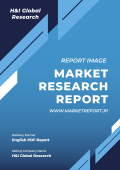1 Preface
2 Scope and Methodology
2.1 Objectives of the Study
2.2 Stakeholders
2.3 Data Sources
2.3.1 Primary Sources
2.3.2 Secondary Sources
2.4 Market Estimation
2.4.1 Bottom-Up Approach
2.4.2 Top-Down Approach
2.5 Forecasting Methodology
3 Executive Summary
4 Introduction
4.1 Overview
4.2 Key Industry Trends
5 Global Electronic Adhesives Market
5.1 Market Overview
5.2 Market Performance
5.3 Impact of COVID-19
5.4 Market Forecast
6 Market Breakup by Form
6.1 Paste
6.1.1 Market Trends
6.1.2 Market Forecast
6.2 Solid
6.2.1 Market Trends
6.2.2 Market Forecast
6.3 Liquid
6.3.1 Market Trends
6.3.2 Market Forecast
7 Market Breakup by Product Type
7.1 Electrically Conductive Adhesives
7.1.1 Market Trends
7.1.2 Market Forecast
7.2 Thermally Conductive Adhesives
7.2.1 Market Trends
7.2.2 Market Forecast
7.3 Others
7.3.1 Market Trends
7.3.2 Market Forecast
8 Market Breakup by Resin Type
8.1 Epoxy
8.1.1 Market Trends
8.1.2 Market Forecast
8.2 Silicone
8.2.1 Market Trends
8.2.2 Market Forecast
8.3 Acrylics
8.3.1 Market Trends
8.3.2 Market Forecast
8.4 PU
8.4.1 Market Trends
8.4.2 Market Forecast
8.5 Others
8.5.1 Market Trends
8.5.2 Market Forecast
9 Market Breakup by Application
9.1 Consumer Electronics
9.1.1 Market Trends
9.1.2 Market Forecast
9.2 Computers and Servers
9.2.1 Market Trends
9.2.2 Market Forecast
9.3 Industrial
9.3.1 Market Trends
9.3.2 Market Forecast
9.4 Medical
9.4.1 Market Trends
9.4.2 Market Forecast
9.5 Automotive
9.5.1 Market Trends
9.5.2 Market Forecast
9.6 Communication
9.6.1 Market Trends
9.6.2 Market Forecast
9.7 Others
9.7.1 Market Trends
9.7.2 Market Forecast
10 Market Breakup by Region
10.1 North America
10.1.1 United States
10.1.1.1 Market Trends
10.1.1.2 Market Forecast
10.1.2 Canada
10.1.2.1 Market Trends
10.1.2.2 Market Forecast
10.2 Asia-Pacific
10.2.1 China
10.2.1.1 Market Trends
10.2.1.2 Market Forecast
10.2.2 Japan
10.2.2.1 Market Trends
10.2.2.2 Market Forecast
10.2.3 India
10.2.3.1 Market Trends
10.2.3.2 Market Forecast
10.2.4 South Korea
10.2.4.1 Market Trends
10.2.4.2 Market Forecast
10.2.5 Australia
10.2.5.1 Market Trends
10.2.5.2 Market Forecast
10.2.6 Indonesia
10.2.6.1 Market Trends
10.2.6.2 Market Forecast
10.2.7 Others
10.2.7.1 Market Trends
10.2.7.2 Market Forecast
10.3 Europe
10.3.1 Germany
10.3.1.1 Market Trends
10.3.1.2 Market Forecast
10.3.2 France
10.3.2.1 Market Trends
10.3.2.2 Market Forecast
10.3.3 United Kingdom
10.3.3.1 Market Trends
10.3.3.2 Market Forecast
10.3.4 Italy
10.3.4.1 Market Trends
10.3.4.2 Market Forecast
10.3.5 Spain
10.3.5.1 Market Trends
10.3.5.2 Market Forecast
10.3.6 Russia
10.3.6.1 Market Trends
10.3.6.2 Market Forecast
10.3.7 Others
10.3.7.1 Market Trends
10.3.7.2 Market Forecast
10.4 Latin America
10.4.1 Brazil
10.4.1.1 Market Trends
10.4.1.2 Market Forecast
10.4.2 Mexico
10.4.2.1 Market Trends
10.4.2.2 Market Forecast
10.4.3 Others
10.4.3.1 Market Trends
10.4.3.2 Market Forecast
10.5 Middle East and Africa
10.5.1 Market Trends
10.5.2 Market Breakup by Country
10.5.3 Market Forecast
11 Drivers, Restraints, and Opportunities
11.1 Overview
11.2 Drivers
11.3 Restraints
11.4 Opportunities
12 Value Chain Analysis
13 Porters Five Forces Analysis
13.1 Overview
13.2 Bargaining Power of Buyers
13.3 Bargaining Power of Suppliers
13.4 Degree of Competition
13.5 Threat of New Entrants
13.6 Threat of Substitutes
14 Price Analysis
15 Competitive Landscape
15.1 Market Structure
15.2 Key Players
15.3 Profiles of Key Players
15.3.1 3M Company
15.3.1.1 Company Overview
15.3.1.2 Product Portfolio
15.3.1.3 Financials
15.3.1.4 SWOT Analysis
15.3.2 Avery Dennison Corporation
15.3.2.1 Company Overview
15.3.2.2 Product Portfolio
15.3.2.3 Financials
15.3.2.4 SWOT Analysis
15.3.3 Bondline Electronic Adhesives Inc.
15.3.3.1 Company Overview
15.3.3.2 Product Portfolio
15.3.4 Dow Inc.
15.3.4.1 Company Overview
15.3.4.2 Product Portfolio
15.3.4.3 Financials
15.3.4.4 SWOT Analysis
15.3.5 Dymax Corporation
15.3.5.1 Company Overview
15.3.5.2 Product Portfolio
15.3.6 Evonik Industries AG
15.3.6.1 Company Overview
15.3.6.2 Product Portfolio
15.3.6.3 Financials
15.3.6.4 SWOT Analysis
15.3.7 H.B. Fuller Company
15.3.7.1 Company Overview
15.3.7.2 Product Portfolio
15.3.7.3 Financials
15.3.7.4 SWOT Analysis
15.3.8 Henkel Ag & Co. KGaA
15.3.8.1 Company Overview
15.3.8.2 Product Portfolio
15.3.8.3 Financials
15.3.8.4 SWOT Analysis
15.3.9 Heraeus Holding
15.3.9.1 Company Overview
15.3.9.2 Product Portfolio
15.3.9.3 SWOT Analysis
15.3.10 Huntsman Corporation
15.3.10.1 Company Overview
15.3.10.2 Product Portfolio
15.3.10.3 Financials
15.3.10.4 SWOT Analysis
15.3.11 Master Bond Inc.
15.3.11.1 Company Overview
15.3.11.2 Product Portfolio
15.3.12 Permabond LLC
15.3.12.1 Company Overview
15.3.12.2 Product Portfolio
Kindly, note that this only represents a partial list of companies, and the complete list has been provided in the report.











